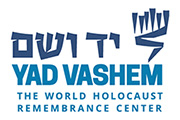It Happened ON OUR PLANET
Moral Dilemmas among Jews in the Reality of the Holocaust
By Yitzhak Arad
It Happened on Our Planet offers a brutally honest insight into the horrifying decisions that the Jews had to make and the unbearable situations in which the Jews found themselves during this time. The publication of this important work presents generations to come with a better understanding of the complex reality of the Holocaust.
In confronting the moral problems raised in this research, I find myself emotionally overwhelmed by them…. I feel as if I am present in the events described in this research, and I incessantly ask myself: What would I have done? How would I have behaved? How would I have responded to that reality?
Yitzhak (Tolka) Arad
As a former partisan, Holocaust survivor, brigadier general in the Israel Defense Forces, historian, and chairman of Yad Vashem, Yitzhak (Tolka) Arad contributed much important historical research and insight about the Holocaust during his long life. In this thought-provoking final work, Arad presents the impossible moral dilemmas experienced by the Jews in the reality of the Holocaust.
Through excerpts from diaries, memoirs, archival material, and research works, Arad addresses some of the most difficult moral questions among Jews from this time. How did the different Judenräte respond when they were ordered to carry out the horrific orders of the Nazis? Is it justified to risk the lives of others in order to save oneself in the cruelty of the concentration camps? To whom should one give medicine in the case of insufficient medical supplies? Should the underground organizations risk the lives of the masses to fight the enemy? Arad examines these moral issues and others from an unquestionably unique perspective as an eyewitness to the Holocaust, and he includes his own moral dilemmas both in the ghetto and during his time as a partisan.
It Happened on Our Planet offers a brutally honest insight into the horrifying decisions that the Jews had to make and the unbearable situations in which the Jews found themselves during this time. The publication of this important work will present generations to come with a better understanding of the complex reality of the Holocaust.
